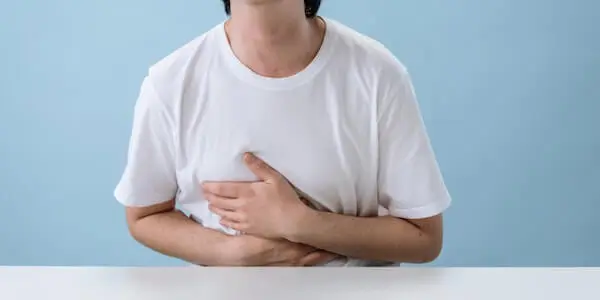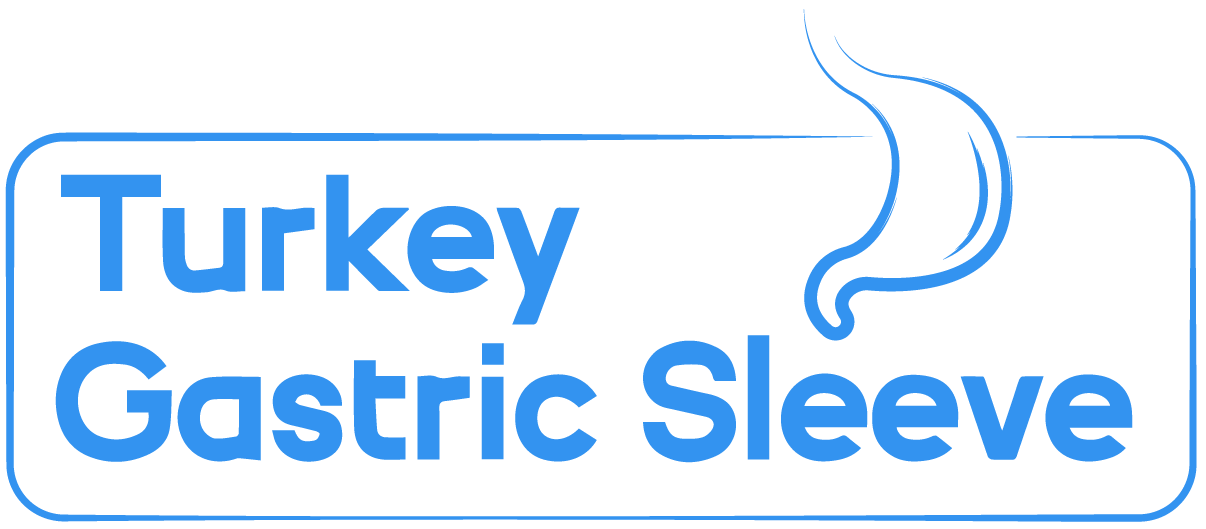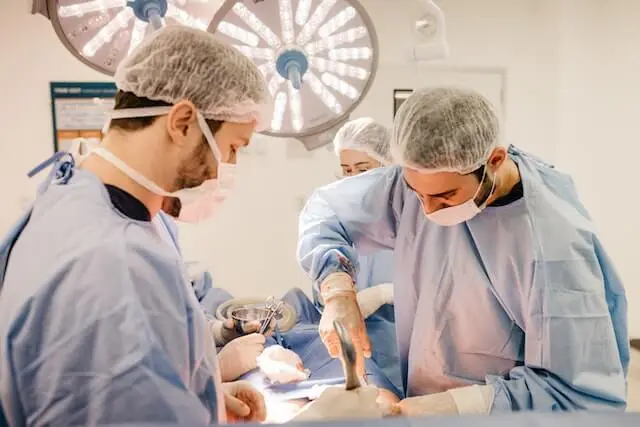Is it normal “Stricture After Gastric Sleeve Surgery?” Gastric sleeve surgery can lead to strictures in a number of locations, including the incisura angularis (the notch along the lesser curvature of the stomach, or the junction of the pyloric antrum and body of the stomach). Surgical procedures are designed to minimize the risk of stricture, but the occurrence of strictures is still a concern for some people. Symptoms of stricture can include frequent vomiting and nighttime regurgitation.
What Causes a Stricture After Gastric Sleeve Surgery?
Gastric sleeve patients can experience strictures after surgery. The condition can result in swollen abdominal wall tissue and reduce the stomach’s ability to stretch and accommodate food when eating. In addition, the surgery can lead to scarring. Strictures are different from ulcers, which form along the seam where the stomach was stapled together. Certain medications, alcohol, and bacterial infections can contribute to the formation of ulcers.
Is it normal stricture after gastric sleeve surgery? One of the key goals of stricture treatment after LSG is to treat the underlying cause of the problem. The underlying pathology that causes this complication must be treated as soon as possible to minimize morbidity and increase patient satisfaction. Fortunately, pneumatic balloon dilation has been shown to be a safe and effective treatment option.
The majority of strictures develop during the first three months after gastric sleeve surgery, and patients typically present with symptoms related to food intolerance, difficulty swallowing, and nausea and vomiting. An upper gastrointestinal endoscopy or barium study may be necessary to confirm the diagnosis. Conservative treatment options include resting the stomach and intravenous fluids to prevent dehydration.
Is it normal stricture after gastric sleeve surgery? The technique used during surgery is critical in avoiding complications. Improper technique can result in a narrow sleeve and a severe restriction. Poor technique may cause a stricture, which is a very common complication following gastric sleeve.
During the first year after gastric sleeve surgery, 101 patients developed a stricture. This is a 0.3% incidence. However, 75 percent of strictures were diagnosed within the first 70 days of surgery. Two dilatations are sufficient to cure approximately 50% of patients. However, a stricture may result in ischemia or tension on the gastrojejunostomy.
Symptoms stricture after gastric sleeve surgery include difficulty swallowing and discomfort. Most strictures are benign, but they can occur in people of any age. In severe cases, they can result in choking and breathing problems, or even dehydration. In these cases, it is crucial to consult your healthcare provider immediately and receive treatment.
Surgical procedures to remove the stricture following gastric sleeve include using fcSEMS stents and revision surgeries, including pyloroplasty or stricturoplasty. The latter treatment option is expensive, but it can be an effective alternative for severe cases of stricture after gastric sleev. It is also associated with some risks, such as migration of the stent.
Is it normal stricture after gastric sleeve surgery? Surgery for gastrojejunostomy stenosis after gastric sleeve can be performed under endoscopic and fluoroscopic visualization. The procedure takes about 15 minutes per patient, and a visual inspection through the balloon can confirm resolution. Repeat dilations are performed if necessary to achieve satisfactory long-term results.
Surgical techniques for gastrojejunal anastomosis after gastric sleeve often include an antecolic or antegastric approach. This reduces the risk of postoperative internal hernia.
How Common Are Strictures After Gastric Sleeve Surgery?
Strictures after gastric sleeve surgery are a common side effect and are painful. Although they can lead to revision surgery, patients typically recover well and return to their normal lives within a few months. The most common treatment for strictures is endoscopic dilatation, which is performed by a medical professional. Repeated treatments every four to six weeks should clear the stricture.
Strictures after gastric sleeve surgery can be acute or chronic and cause difficulty swallowing and pain. Strictures can be corrected by endoscopic dilation, which widens the sleeve and restores its function. If a stricture is severe and becomes chronic, the patient may need emergency surgery. Strictures can lead to progressive pain and may even lead to dizziness.
Gastric sleeve patients may develop a mild or severe form of stricture in the gastrojejunal anastomosis. Mild strictures occur in approximately 60% of patients, and are usually harmless and can be treated with a simple endoscopic procedure. Early detection is essential, as strictures usually occur between three and four weeks after surgery.
Anastomotic strictures are short segments of narrowing that form at the gastrojejunal anastomosis. These may cause delayed emptying of the gastric pouch.
What Causes a Stricture After Gastric Sleeve Surgery?
A stricture is a common complication of gastric sleeve surgery. It develops along the staple line, and causes burning epigastric pain and sometimes vomiting. It can be caused by alcohol and non-steroidal anti-inflammatory drugs. It is also more common in individuals who have Helicobacter pylori. Treatment usually involves antacids.
Is it normal stricture after gastric sleeve surgery? Strictures can be acute or chronic. They prevent food from reaching the stomach or intestines. In some cases, they can lead to nausea or vomiting and may affect swallowing. However, in a small percentage of cases, a stricture can be cured without additional surgery.
Strictures after gastric sleeve surgery. Gastric sleeve stricture is a common complication, and it can occur in the days or weeks after surgery. It occurs when scar tissue forms where the stomach and small intestine join. As a result, the stomach becomes narrow and difficult to digest food. Strictures are not always fatal, but they can be uncomfortable and debilitating.

A gastric sleeve stricture may require additional surgery. A surgeon may perform an endoscopic procedure to treat the tightness. This procedure is typically performed by a laparoscopic surgeon. Some surgeons also use robotic-assisted surgery to perform the procedure.
Strictures may develop in three to nine percent of patients. They typically occur within four weeks of the surgery. They can be caused by postsurgical scarring at the gastrojejunal anastomosis or by chronic ischemia caused by gastrojejunostomy tension. They usually occur shortly after meals.
Gastric Stricture Treatment
Treatment of gastric strictures is usually a combination of medications and surgery. In some cases, strictures can be cured with dilation alone, while in others, more than one dilation is required. In some cases, the stricture recurs within a year, and in these cases, patients may be prescribed a proton pump inhibitor to prevent a recurrence. Patients can usually resume their normal diets and daily routines after treatment. However, they should monitor their symptoms to ensure that they are not experiencing a recurrence.
The most common type of gastric stricture treatment is endoscopic, which involves inserting a thin scope into the esophagus and stretching the narrowed area. This procedure is performed under a local anesthetic and sedative. Sometimes, a stent is inserted into the narrowed area to keep it open.
Stricture after gastric sleeve surgery?. In some instances, a patient may have other conditions that result in the formation of gastric strictures. For example, esophageal varices can be the result of severe GERD or an allergic reaction. Other causes can include scleroderma, a disease of the esophageal lining. Proton pump inhibitors are drugs that reduce the acid secreted by the stomach, preventing gastric stricture. Medications such as corticosteroids can also be prescribed.
In severe cases, people with esophageal strictures may have choking episodes, breathing difficulties, or dehydration. It’s best to discuss this condition with a healthcare provider as soon as possible. If your symptoms don’t improve after the treatment, a procedure called dilation may be necessary. You should also make sure that you follow up appointments with your healthcare provider.

